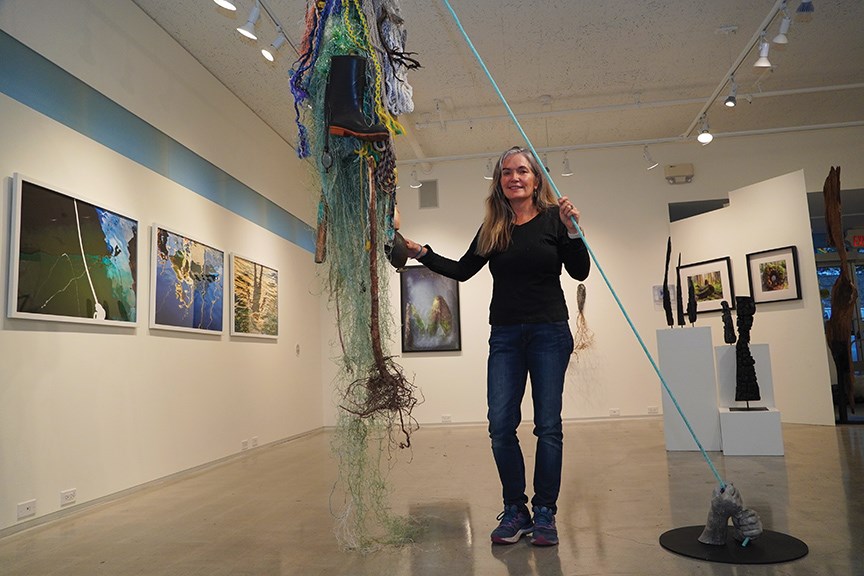The new exhibition at Gibsons Public Art Gallery (GPAG) could not be more timely, opening as it did last week, smack in the middle of COP26, the 2021 United Nations Climate Change Conference taking place in Glasgow, Scotland.
Vancouver mixed-media artist Valerie Durant’s show, Invisible Rivers, is about the impact of Earth’s human population on the planet’s environment. That impact and its causes can lie hidden among land, forest, and sea, linked by just such “invisible rivers.”
“We don’t always see the connection between the various systems,” Durant said in an interview. “There can be a flood from deforestation, like a few years ago in Lytton, and people don’t realize that these things stream down and end up on our shorelines.”
While the installation’s photographic, video, and sculptural works carry a serious message, it’s delivered in a way that is neither dark nor scolding, but appealing and even playful.
The smaller Eve Smart Gallery just off the main display-space has become what Durant called “the jellyfish room,” featuring her porcelain sculptures and photos of the creatures, which are now proliferating in warmer oceans.
A series of 14-by-20-inch photographs on the main room’s back wall is called Portraits from the Anthropocene, a new term for Earth’s current geologic period, the age of humans. Many of the seaside pictures were taken here on the Coast while Durant had a recreational property near Gibsons. All come with cheeky titles, like Plastic is King, Atlantis, Polar Thaw, Old Buoys, and Standing Carbon. It won’t take long for GPAG visitors to get the subtly grim humour.
Some objects in those photos can also be found as free-standing works elsewhere in the exhibit, like a burned wood piece in the series The Last Stand. Another installation features pieces of ice imbued with organic and human-made contents, melting in a container of water, rather like shards of a polar ice cap.
Durant has also brought her dream-like six-minute video, the Silence of the Seas, which plays constantly, the natural soundtrack audible throughout the gallery. The film, much of it shot on the waters and shore near Bonniebrook, is one look at humans’ relationship with the ocean.
“The video was made during the early stages of the COVID lockdown,” said Durant. “I observed how silent the seas became, both on the Coast and in Vancouver Harbour. There were no freighters, no log booms as forestation had stopped and, of course, no cruise ships.”
The show is mostly photographic. Some works are inviting, complex collages, others are single images. All address the anthropocentric view that the natural world is separate from us, and is ours to exploit. The artful series, Oil and Water, shot in Gibsons Harbour, is just one example.
Invisible Rivers is on at GPAG until Sunday, Nov. 28.



